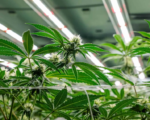In the latest installment of “Captives of Cannabis,” NBC News’ Jacob Soboroff embeds with an elite drug task force to provide an inside look at how authorities are combating the smuggling of cannabis, money, and human trafficking across U.S. highways. This investigative report sheds light on the sophisticated operations of international criminals and the relentless efforts of law enforcement to curb these illegal activities.
The smuggling of cannabis across U.S. highways is a complex and well-organized operation. Criminal networks employ various tactics to transport large quantities of cannabis from states where it is legal to those where it remains prohibited. These networks often use commercial trucks, private vehicles, and even rental cars to move their illicit cargo. The smugglers are highly skilled at concealing the drugs, using hidden compartments and sophisticated packaging techniques to evade detection.

Law enforcement agencies have ramped up their efforts to intercept these shipments. The elite drug task force, with which Soboroff embedded, utilizes advanced technology and intelligence gathering to track and apprehend smugglers. Despite these efforts, the sheer volume of cannabis being transported across state lines presents a significant challenge. The task force’s success in seizing large quantities of cannabis highlights the ongoing battle between law enforcement and criminal organizations.
The Human Cost
The smuggling of cannabis is not just a criminal enterprise; it also has a profound human cost. Many of the individuals involved in these operations are exploited and coerced into participating. Human trafficking is often intertwined with drug smuggling, with victims being forced to transport drugs under threat of violence or other forms of coercion. These individuals, often referred to as “mules,” face severe consequences if caught, including lengthy prison sentences and deportation.
The task force’s efforts to combat human trafficking are a critical component of their mission. By targeting the criminal networks that exploit vulnerable individuals, law enforcement aims to disrupt the supply chain and provide support to the victims. Soboroff’s report highlights the stories of several individuals who have been rescued from these dangerous situations, shedding light on the human toll of cannabis smuggling.
The Role of Technology
Technology plays a crucial role in the fight against cannabis smuggling. Law enforcement agencies have adopted a range of advanced tools and techniques to detect and intercept illegal shipments. These include license plate readers, surveillance drones, and sophisticated data analysis software. By leveraging technology, the task force can identify patterns and predict the movements of smugglers, increasing their chances of successful interdiction.
One of the key challenges faced by law enforcement is staying ahead of the constantly evolving tactics used by smugglers. Criminal networks are quick to adapt to new technologies and develop countermeasures to evade detection. This ongoing cat-and-mouse game requires law enforcement to continually innovate and refine their strategies. Soboroff’s report provides a glimpse into the high-tech world of modern drug enforcement and the relentless pursuit of justice.
Maria Garcia is an award-winning author who excels in creating engaging cannabis-centric articles that captivate audiences. Her versatile writing style allows her to cover a wide range of topics within the cannabis space, from advocacy and social justice to product reviews and lifestyle features. Maria’s dedication to promoting education and awareness about cannabis shines through in her thoughtfully curated content that resonates with both seasoned enthusiasts and newcomers alike.








